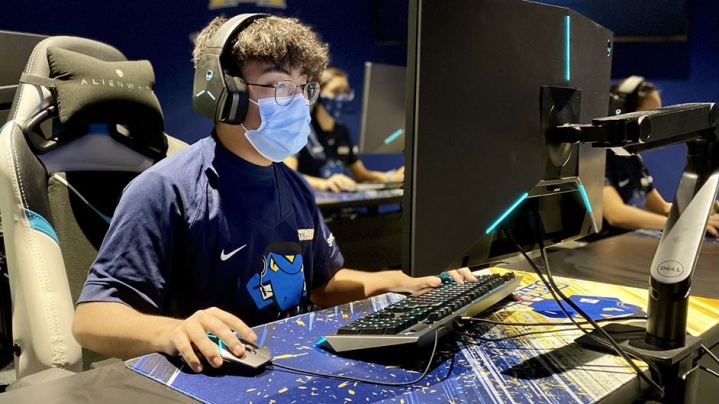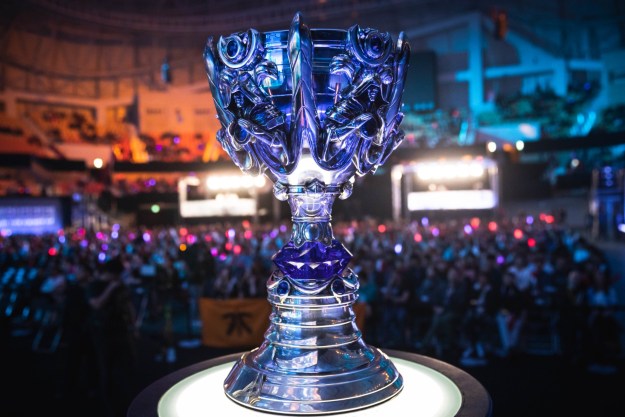The esports industry has seen immense growth over the last 10 years, with the Washington Post going so far as to call the 2010’s the era of “esports adolescence.” With the introduction of Twitch in 2011 and large competitions like the first League of Legends World Championships seeing a $100,000 prize pool in the same year, esports started to gain increasedf coverage and growth as the 2010s went on.
Competitive esports at the professional level has seen large competitions that sold out stadiums such as Madison Square Garden in 2016 and certain games even set to be medaled events at the Asian Games 2022.
One area that has seen growth within the larger industry is that of collegiate esports. Colleges across the United States are launching esports programs at an increasing rate, including Pace University and the University of Arizona, adding to well over 100 programs currently in existence. Some of these programs may have started out as student-run clubs, but many are seeing participation in organized leagues now.
So, where does collegiate esports stand now and where might it be going for all those involved? With increasing support from colleges and universities in the form of program investment, scholarships, and continued interest from students, collegiate esports are set to become as normal an extracurricular as sports themselves.
The current state of collegiate esports
Collegiate esports, much like the industry as a whole, has seen growth over the last few years. That growth can be reflected in more students participating in esports programs. For example, the State University of New York (SUNY) saw 2,077 students enrolled in a SUNY esports program in the 2021 fall semester, compared to 636 students enrolled in the 2020 fall semester.
That growth can also be seen in other areas.
Kaitlin Teniente, esports head coach at St. Mary’s University, shared some insight into the growth she’s seen in collegiate esports.“Over the last few years (2017-2020). I’ve seen tremendous growth within the collegiate esports space,” Teniente tells Digital Trends. ‘There’s an increase of universities and colleges investing in esports programs and offering support to student organizations or clubs, and an increase of available esports competition to match the increase in demand. Some contributing factors include support for college esports competition from the game developers, and universities investing in esports programs as a retention and recruitment tool.”
A 2019 report that surveyed 281 leaders across K-12 and higher-education institutions worldwide found that schools were embracing esports programs for several reasons, just as Teniente outlined. Those surveyed said their esports programs helped to improve campus experiences and to boost overall student recruitment and retention. Student recruitment was reported as a factor by 41% of those surveyed.
Much like the esports industry as a whole, collegiate esports is growing with support from schools and outside organizations like the National Association of Collegiate Esports (NACE), which offers membership to more than 170 colleges and universities that have their own esports leagues.
Kenneth Utama, previous Dota Director at UBC Esports, notes that collegiate esports also grows alongside the larger esports industry. “Most of these [university] clubs may have existed for a long time, but are now growing due to esports entering the mainstream,” Utama tells Digital Trends. “For example, the University of British Columbia Esports Association has existed since 2012, but it has really been taking off the past few years. As university esports clubs grow, schools are more willing to invest in them.”
Collegiate esports and a bright future
Esports as an entire industry is projected to see 29.6 million viewers in 2022, with those numbers only set to rise in the coming years. Outside of increased viewership for esports, those working within the collegiate space have a bright outlook for the future that includes more growth in areas like student scholarships, further investment in esports programs, and a continued flourishing of the community that can be found in the players themselves.
Tarvis Malone, director of esports at Trine University and a previous esports player himself, can speak directly to his program’s community growth.
“Speaking from my personal experience of being in our conference, [collegiate esports] turned into a comradery and family within our games. Recently, we had our conference playoffs offline for the first timem and I can tell the students and staff enjoyed everyone’s presence.” Malone says. “They were able to talk in person instead of on Discord. It is normal to have disagreements, debates, rivalries, etc., but it is so much better to be in person to get a better understanding of everything.”
Our Overwatch team is playing game one against WMU! Being streamed at https://t.co/afckOsMqTa pic.twitter.com/4KEOout4Qw
— Trine Esports (@TrineESPORTS) November 20, 2021
In person or online, collegiate esports communities only seem to be growing. In Utama’s time at the University of British Columbia, the school’s esports association grew to have an extremely large community Discord server.
Alongside the community, scholarships have come to be an important factor for students. According to the NACE, more than 200 member universities contribute over $16 million in esports scholarships on an annual basis. For Utama, he hopes to see growth within the scholarship offerings from schools in the future.
“I definitely hope to see a lot of growth. Collegiate [esports] will become more important as time goes by as schools begin to accept esports into their fold,” Utama says. “The hope is that one day students can get full/partial scholarships for participating in esports. For a lot of collegiate bodies, I’d assume this would be the largest change to expect over the next few years.”

More growth ahead
As collegiate esport leagues move forward with building full-on arenas, the future of the industry does seem to have the backing of universities themselves. But we might also expect to see more investment in terms of recruitment, financing, and further consolidation of the space as a whole, according to Teniente.
“For scholastic (high school) and collegiate esports, I expect to see more active and vocal parents when it comes to high school to college esports recruitment pipelines,” Teniente said. “As for growth, I think we’ll see more LAN events on college campuses, more universities investing in their own esports programs, and a consolidation of the college esports leagues.”
Collegiate esports may fall under the wider industry umbrella of esports, but it’s clear that the college space has a strong presence all its own with ever-growing support behind it.
Universities have started to put serious backing into esports programs that initially started out as student-run clubs. Investment in these programs is reflected in things like scholarships that help fund student athletes’ educational opportunities, as well as larger organizations forming to help support the industry, like the NACE and Tespa, an organization that serves as a network for students.
But one last note from Teniente reminds us that collegiate esports also continues to grow in a much narrower scope: With the people who make college leagues and competitions possible.
“When we think of esports, we may think only of the players and competition, and not consider all the roles needed to support players and competition like marketing and brand managers, event coordinators, team managers, broadcasting and production teams and so on,” Teniente said. “When we broaden our scope within esports, I think it attracts more talent and generally more people who otherwise might not have considered being part of esports (players included).”
Editors' Recommendations
- How an underdog Street Fighter 6 player beat the odds to win $1 million
- FaZe Clan’s first all-female esports team is ready for the pressure
- You can compete in the Olympics eSports Series by playing a $1 baseball game
- 2022 was excellent for sports games, depending where you looked
- You can win cash with PlayStation’s new tournament feature. Here’s how to sign up




